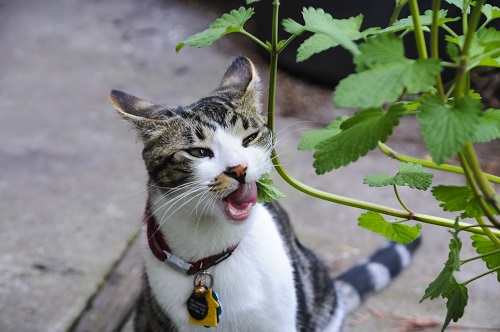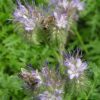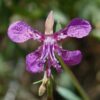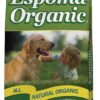Key Takeaways
Lily of the Valley is highly toxic to pets, causing symptoms like vomiting, diarrhea, and irregular heartbeat.
Identify and remove harmful plants from your garden to ensure your pet’s safety.
Catnip is a safe and stimulating alternative that can be easily grown in a pet-friendly garden.
Learn how to replace Lily of the Valley with pet-safe plants and create a non-toxic environment.
Maintaining a pet-safe garden involves careful plant selection and ongoing vigilance.
“10 Ways to Use Catnip For Your Cat” from nepetacataria.org and used with no modifications.
The Hidden Dangers of Lily of the Valley for Pets
As a pet owner, creating a safe haven for your furry friends starts right in your backyard. Lily of the Valley, while enchanting with its delicate bell-shaped flowers, harbors a dark secret. This plant is highly poisonous to pets, especially to curious cats and dogs that may be tempted to nibble on its leaves or flowers.
Why This Flower Is Harmful
Lily of the Valley contains cardiac glycosides, potent compounds that can wreak havoc on your pet’s cardiovascular system. Even small amounts ingested can lead to severe symptoms or, in worst-case scenarios, be fatal. The risk isn’t worth the plant’s aesthetic appeal.
Recognizing Symptoms of Poisoning
If your pet has ingested Lily of the Valley, they might exhibit signs such as vomiting, diarrhea, a drop in heart rate, or seizures. Time is of the essence, and immediate veterinary care is crucial to prevent kidney damage or more severe outcomes.
Your Pet-Friendly Garden Starter Kit
Creating a pet-safe garden doesn’t mean sacrificing beauty. It’s about making informed choices and opting for plants that won’t harm your beloved animals.
Choosing the Right Plants
Start by assessing your current garden and identifying any potentially toxic plants. Replace harmful flora with pet-friendly options like catnip, which not only is safe but also provides a stimulating experience for your pets.
Essentials for a Non-Toxic Green Space
When designing your pet-safe garden, consider plants that are non-toxic and that also contribute to the ecosystem of your garden. Think about adding a mix of perennials, shrubs, and herbs that are known to be safe for pets.
Catnip: A Safe and Stimulating Plant for Pets
Let’s turn our attention to a pet-friendly superstar: catnip. This herb is a member of the mint family and is well-known for its ability to delight and entertain our feline friends. But it’s not just for cats; catnip is non-toxic to dogs too, making it a fantastic addition to any pet-safe garden.
What makes catnip such a hit with cats is nepetalactone, a compound found in the leaves and stems that triggers a typically euphoric response in most cats. It’s like a burst of feline happiness, and watching your cat enjoying a catnip plant can be a source of joy for pet owners as well.
But it’s not just fun and games. Catnip can also serve as a natural repellent for certain insects, making it a dual-purpose plant in your garden. It’s easy to grow and maintain, which means you can provide a safe and stimulating environment for your pets with minimal effort.
Non-toxic to both cats and dogs
Contains nepetalactone, which provides a stimulating effect on cats
Can act as a natural insect repellent
Easy to grow and maintain in a variety of climates
Different Varieties of Catnip
While the classic catnip, Nepeta cataria, is the most popular variety, there are other species of Nepeta that can also be used safely around pets. Some varieties like Nepeta faassenii, or ‘catmint,’ have a more subdued effect on cats but still offer the same safety and enjoyment. Exploring different types of catnip can add variety to your garden while keeping it pet-friendly.
How to Plant and Care for Catnip
Planting catnip is straightforward. You can start with seeds, small plants, or even cuttings from an existing plant. Catnip prefers well-drained soil and plenty of sunlight, but it’s hardy and can tolerate a range of conditions, including those outlined in our guide on drought-tolerant dog-safe plants. Water your catnip regularly, especially during dry spells, and you’ll soon have a robust plant that’s ready to delight your pets.
Making the Switch: How to Replace Toxic Plants
Now that you’re aware of the dangers of Lily of the Valley and the joys of catnip, it’s time to make the switch. Replacing toxic plants with safe alternatives is a proactive step to protect your pets.
Begin by removing the Lily of the Valley and any other harmful plants from your garden. Ensure that all parts of the plant, including roots and fallen leaves, are completely removed, as these can still pose a risk if left behind.
Removing Lily of the Valley
Removing Lily of the Valley should be done with care. Wear gloves to protect your skin and dispose of the plant material safely, out of reach of your pets. If you’re unsure about how to properly remove the plant, seek advice from a professional gardener or consult your local garden center for safe plant removal guidelines.
Once the area is clear, prepare the soil by turning it over and adding some organic compost to provide a rich foundation for your new, pet-safe plants.
Introducing Pet-Safe Alternatives
With Lily of the Valley out of the way, you can start introducing pet-safe alternatives. Catnip is an excellent choice, but there are many other non-toxic plants to consider, such as:
Snapdragons
Marigolds
Roses
Sunflowers
Zinnias
These plants not only add color and variety to your garden but also ensure that it’s a safe place for your pets to explore. When selecting plants, always double-check their toxicity with a reliable source, such as the ASPCA’s list of non-toxic plants for pets.
Creating a Pet-Safe Haven in Your Garden
Building a pet-safe garden is an ongoing commitment. It’s about more than just the plants you choose; it’s also about how you design and maintain your space.
Design your garden with pets in mind. Create pathways for them to explore and include shaded areas for rest. If your pet loves to dig, consider setting aside a small ‘digging box’ or area where they can satisfy their instincts without harming your plants.
Design pathways for pets to explore
Include shaded areas for rest
Provide a designated digging area if needed
Regular maintenance is key to keeping your garden safe. Keep an eye out for any plants that may have sprouted up on their own and remove any toxic ones immediately. Also, be vigilant about the use of fertilizers and pesticides, opting for pet-safe options whenever possible.
Design Tips for a Pet-Friendly Layout
A pet-friendly garden layout takes into account the natural behaviors of your pets. For example, cats often enjoy high perches for surveying their territory, so consider incorporating structures like cat-safe shelving or trees they can climb. Dogs, on the other hand, may appreciate open spaces for playing fetch or running around.
Maintaining Your Garden for Pet Safety
Creating a safe space for your pets to enjoy the outdoors is essential. Regularly inspect your garden for plants that may have grown or been introduced without your knowledge. Pets are curious by nature, and an unknown plant could be a hidden danger.
Secure the perimeter of your garden. Pets, especially dogs, can be escape artists. Ensuring that fences are intact and gates are secure can prevent your pet from wandering off and encountering hazards outside your controlled environment.
Be mindful of the products you use in your garden. Fertilizers, pesticides, and even some mulches can be harmful to pets. Always choose pet-safe options and store any garden chemicals in a place that’s inaccessible to your furry friends.
Inspect your garden regularly for unknown plants
Ensure fences and gates are secure
Use pet-safe garden products and store them securely
Maintaining a pet-safe garden is an ongoing process that requires attention and care. But the reward of seeing your pets happily exploring their outdoor environment is well worth the effort.
FAQ
Got more questions? Here are some answers to common concerns about keeping your garden safe for pets.
What other common garden plants are toxic to pets?
Besides Lily of the Valley, several other common garden plants can pose a risk to your pets. These include sago palm, azaleas, rhododendrons, oleander, and certain types of bulbs like daffodils and tulips. Always check the toxicity of a plant before introducing it to your garden.
Can Lily of the Valley be in a garden with pets if it’s out of reach?
While keeping toxic plants out of reach may seem like a solution, it’s not foolproof. Pets can be surprisingly resourceful when it comes to reaching something they’re curious about. It’s safer to eliminate the risk entirely by not planting Lily of the Valley or other toxic plants in pet-accessible areas.
How do I know if a plant is pet safe?
Research is key. The ASPCA provides a comprehensive list of plants that are toxic and non-toxic to pets. When in doubt, consult with your veterinarian or a knowledgeable nursery employee before bringing a new plant into your garden.
Are there any pet-safe fertilizers and pesticides?
Yes, there are pet-safe options available for fertilizers and pesticides. Look for organic or natural products that are marked as safe for pets. Always follow the instructions carefully, and consider applying these products during times when your pets are indoors.
What should I do if I suspect my pet has ingested a toxic plant?
If you think your pet has ingested a toxic plant, act immediately. Remove any plant material from your pet’s mouth and contact your veterinarian or the ASPCA Animal Poison Control Center. Be ready to provide information about the plant and the amount your pet may have ingested.






